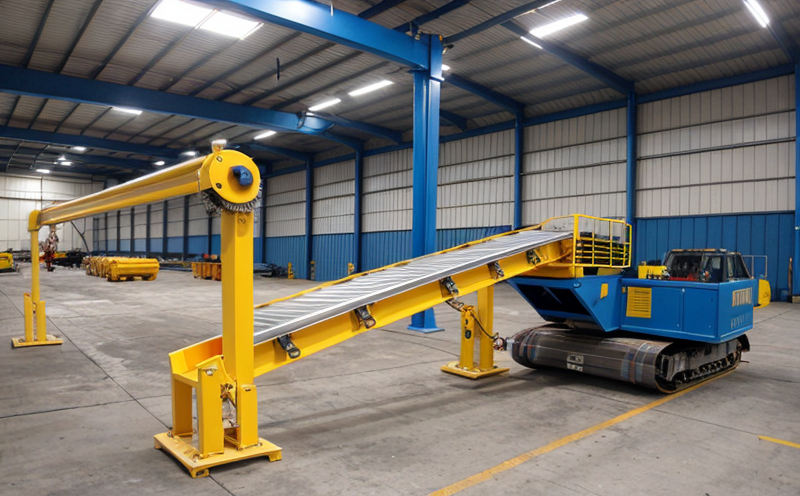EN 14973 Fire Resistant Conveyor Belt Testing for Underground Use
The European Standard EN 14973 outlines stringent requirements for fire-resistant conveyor belts intended for use in underground mining applications. This standard ensures that the belts can withstand high temperatures and resist flame propagation, thus enhancing safety within mines where combustible materials are present.
Conveyor belts used in underground mining environments face unique challenges due to their proximity to flammable materials like coal dust and methane gas. These conditions necessitate robust fire-resistant properties to prevent catastrophic failures that could lead to explosions or prolonged fires. The standard applies not only to the belt itself but also to its components such as splices, covers, and supporting structures.
The testing procedures specified in EN 14973 are designed to simulate real-world scenarios where a conveyor belt might be exposed to fire hazards. Tests typically involve exposing the belt sample to controlled flame sources under specific conditions that mimic potential ignition points within mines. Key parameters include temperature thresholds, duration of exposure, and the type of fuel used for combustion tests.
Specimen preparation is critical in ensuring accurate test results. Samples must be cut from production rolls according to prescribed dimensions, ensuring they represent typical usage conditions. The belts are then subjected to rigorous testing using specialized equipment capable of generating controlled flames and measuring thermal properties accurately.
The standard provides detailed acceptance criteria based on performance metrics such as flame spread rates, heat release rates, and smoke generation levels. Compliance with these standards ensures that the conveyor belt meets stringent safety requirements necessary for safe operation in hazardous environments like underground mines.
| Application | Description |
|---|---|
| Mining Conveyors | Used for transporting minerals and other materials within mining operations. |
| Tunneling Applications | Supports construction activities in underground tunnels where fire safety is paramount. |
| Hazardous Area Work Environments | Incorporated into systems handling flammable substances, reducing risks associated with accidental ignition. |
The testing process involves several stages including initial inspections of raw materials followed by production roll examinations before cutting specimens for actual fire tests. Each stage contributes to overall quality control ensuring that only reliable products reach the market.
- Ensures compliance with international safety regulations.
- Promotes safer working environments by preventing potential accidents resulting from faulty equipment.
- Facilitates smoother operations through consistent performance across different batches of conveyor belts.
| Scenario | Details |
|---|---|
| Mine Fire Simulation | A mine experiences a small fire in one of its tunnels. The conveyor belt quickly stops operating due to heat damage, preventing further spread of flames. |
| Splice Integrity Check | A splice joint fails during routine maintenance checks after prolonged exposure to high temperatures. Replacement parts are identified based on EN 14973 standards ensuring durability and reliability under similar conditions. |
| Material Quality Assurance | A supplier provides new batches of conveyor belt material claiming compliance with EN 14973. Testing confirms adherence to specified fire resistance levels before final approval for use in mining operations. |
In summary, adhering to EN 14973 not only meets regulatory requirements but also significantly enhances the safety of workers and processes within underground mines. By following this standard, manufacturers ensure their products meet the highest standards of fire resistance essential for safe operations.





